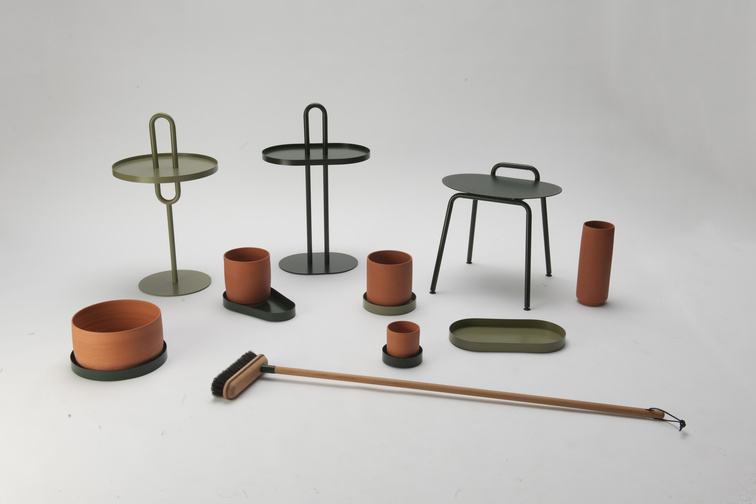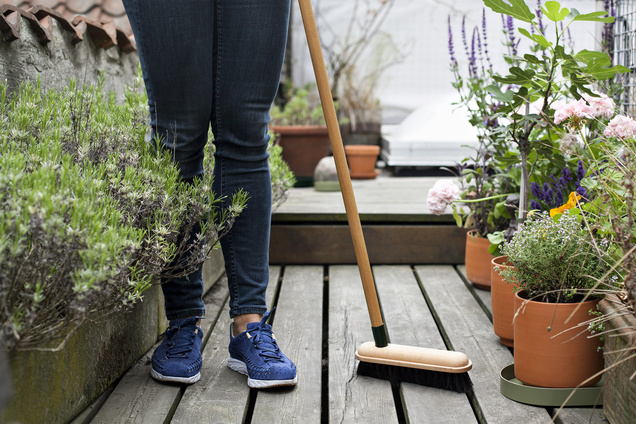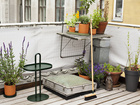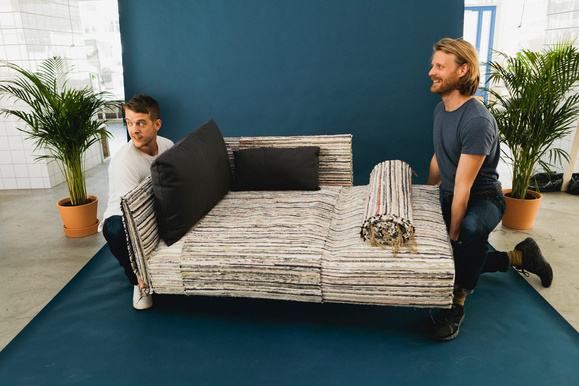In recent years, the city has become greener – backyard environments are filled with plants and trees, and blocks of flats are sprouting with balconies. Urban dwellers insist on a green element in their homes, even though space is at a premium. Meet the designers Mads Sætter-Lassen and Emil Krøyer. In their joint degree project they created a series of objects that adapt to urban dwellers’ need for both life on their balconies and space in their flats.
Your degree project is called ‘Objects for Negotiation’ – what is it all about?
Planting, watering and picking are happening all over the city. Only very few buildings are designed without taking into account green environments in the shape of courtyards, balconies or terraces. How are these green environments used, and how can we, as designers, accommodate the needs of users?
We created a series of articles for a small home with a balcony or courtyard. We tried to erase the threshold between the objects’ affiliation to indoors and out, so they can be used both on the balcony and in the living room, depending on the time of year.
What was your motivation for this project in particular?
We are both very fond of outdoor life and regard that as a necessity for being able to relax. As city dwellers, we have experienced a challenge in integrating nature into our everyday lives, and with the growing popularity of balconies in cities we have found out that we are by no means alone in our need.
Did you work with other people during the process, and how did that affect your work process?
A large number of sponsors and collaborators were involved in the process. Some people made materials available, while some helped us with their professional expertise. For example, Kvadrat sponsored fabric for the stool, while Skagerak provided invaluable feedback in terms of the market for indoor-cum-outdoor furniture. From the very beginning of the project, we were very conscious of the industry. It was important to anchor our project in the reality that awaits us on the other side of our exams.
Reality for us means working together with experts and manufacturers.
In what way do you imagine your final project will make a difference?
It is a fact that cities are growing, and that most of us in the future are going to live in much more restricted spaces. In our project we attempted to design a range that accommodates this urban development. The idea is that, using our products, you do not necessarily have to purchase one set of furniture for the balcony and one set for the flat.
Can you see development potential/job opportunities in it?
We see potential and a need to challenge the topic further, because the fewer square metres per urban dweller will be a constant issue in the future.


What are the most enjoyable and the most difficult aspects of designing the way you do?
The most enjoyable aspect of our process was the involvement of collaborators. We believe that in the last five years of studies and with a curiosity about the industry, we have acquired a lot of knowledge. But we are aware that we are by no means experts, so we were very happy for the knowledge we acquired from outside.
Meanwhile, the most difficult aspect was managing the development process and delivery from the above-mentioned collaborators. New, unknown problems occur constantly and have to be resolved before taking the next step.
If you were to identify something, which you would have loved to design, what would it be, and why?
Achille Castiglioni’s ‘Snoopy’ table lamp has both sculptural value, provides excellent light, a great composition of materials - not to mention a fundamental humorous element. These are all characteristics, which we value and attempt to incorporate into our own designs.
What do you think is your greatest strength as KADK design graduates?
As KADK design graduates, we have a wide range of skills, which can lead is to all sorts of places.
Where do you see yourselves career-wise in five years’ time?
We hope to be a small design studio with challenging projects, designing everything from gizmos to exhibitions.















